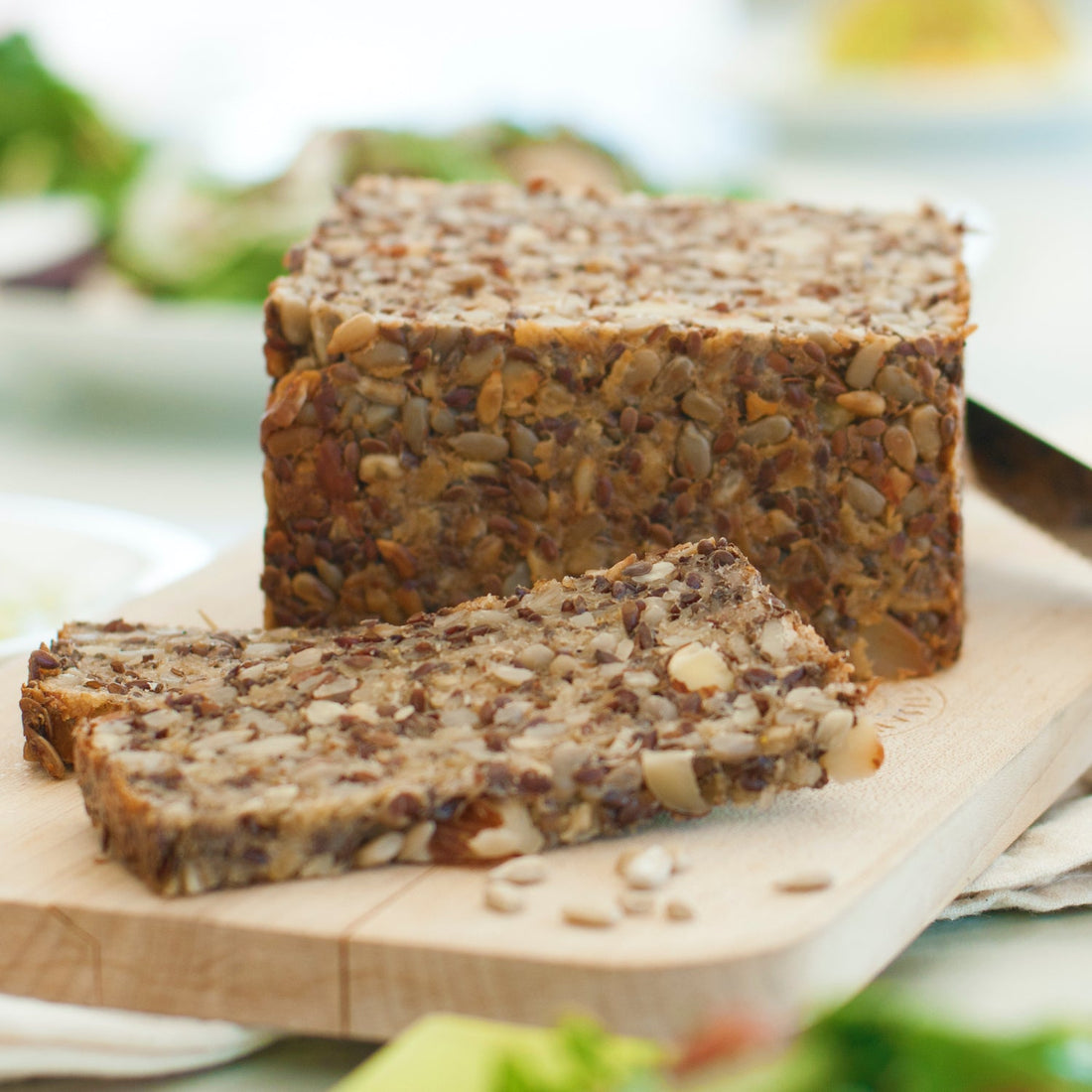
Guide to Gluten-Free Bread: Easy Recipe & Tips
Share
Gluten-Free Bread: Delicious, Nutritious, and Easy to Make at Home
If you have celiac disease, gluten intolerance, or prefer avoiding gluten for health reasons, enjoying bread without compromising your taste buds or nutrition is still possible. Gluten-free bread offers a delightful alternative that’s both satisfying and versatile. In this guide, we’ll explore what gluten-free bread is, what to look for when shopping for it, and how to make your own high-fiber, protein-packed loaf at home.

What Is Gluten-Free Bread?
Gluten is a protein found in grains like wheat, barley, rye, and spelt. While it gives traditional bread its elasticity and chewy texture, it can trigger digestive issues and inflammation in many people. Gluten sensitivity, a condition affecting millions worldwide, can cause symptoms such as:
- Digestive issues
- Fatigue
- Brain fog
- Joint pain
- Skin problems
Even if you test negative for celiac disease, you might still experience gluten intolerance. The best way to identify gluten sensitivity is through an elimination diet. Fortunately, testing positive doesn’t mean you have to give up bread forever! With alternative flours and grains, you can enjoy delicious gluten-free bread without compromising on taste or nutrition.

Ingredients to Look for in Gluten-Free Bread
Not all gluten-free breads are created equal. Some may contain additives, preservatives, or unhealthy fats that diminish their nutritional value. Here are some tips for choosing the best gluten-free bread:
- Certified Gluten-Free Label: Ensure the bread is certified to contain less than 20 parts per million (ppm) of gluten.
- Whole Grains and Seeds: Look for ingredients like quinoa, buckwheat, millet, or chia seeds for added fiber, protein, and nutrients.
- Natural Ingredients: Avoid artificial colors, flavors, sweeteners, or preservatives.
- Low Sodium and Sugar: Compare nutrition labels for healthier options.
- Fresh or Frozen Bread: Bread from local bakeries or health food stores often tastes better and contains fewer additives than shelf-stable varieties.

Easy Homemade Gluten-Free Bread Recipe
Making your own gluten-free bread is simple and rewarding. This recipe uses oat flour, almond flour, flax seeds, chia seeds, and psyllium husk for a loaf that’s high in fiber and protein. Perfect for sandwiches, toast, or snacking!
What you'll need:
- 1 1/4 cups warm water (about 110°F)
- 2 teaspoons active dry yeast
- 1 tablespoon honey
- 2 cups oat flour
- 1 cup almond flour
- 1/4 cup ground flax seeds
- 2 tablespoons chia seeds
- 2 tablespoons psyllium husk
- 1 teaspoon salt
- 2 tablespoons apple cider vinegar
- 2 tablespoons oil (such as olive or coconut)
How to make it:
- In a small bowl, whisk together the water, yeast, and honey. Let it sit for about 10 minutes until foamy.
- In a large bowl, whisk together the oat flour, almond flour, flax seeds, chia seeds, psyllium husk, and salt.
- Add the vinegar and oil to the yeast mixture and stir well.
- Pour the wet ingredients into the dry ingredients and mix with a wooden spoon until a sticky dough forms.
- Transfer the dough to a greased 9x5 inch loaf pan and smooth the top with a spatula.
- Cover the pan with a damp cloth and let it rise in a warm place for about an hour or until doubled in size.
- Preheat the oven to 375°F and bake the bread for 35 to 40 minutes or until golden and firm.
- Let the bread cool completely in the pan before slicing.
Enjoy your homemade gluten-free bread with your favorite toppings or use it for sandwiches and toast.
Want a delicious gluten free bread that is packed with fiber, protein and vegan? Try Organic Pharmer's Pharmer Bread. 100% Organic, gluten free and vegan!

